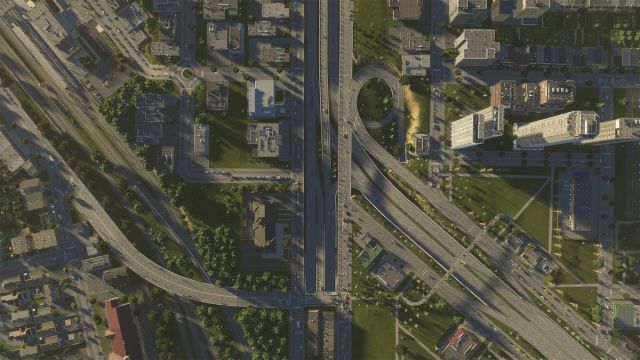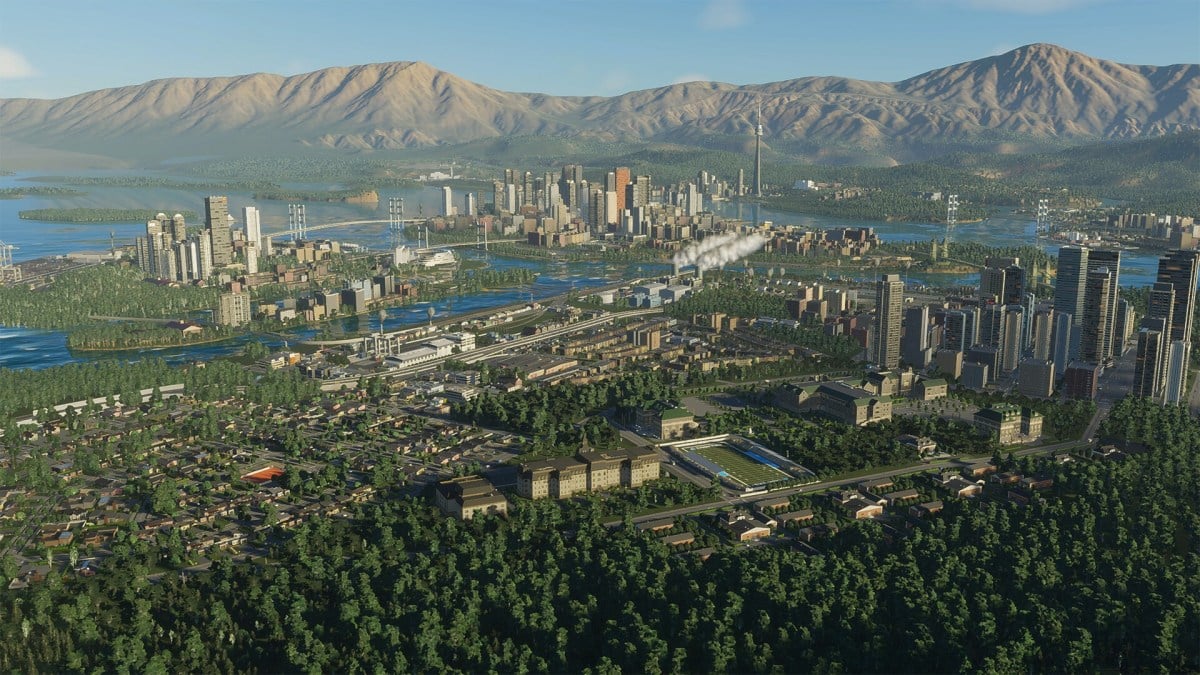As an aspiring virtual city planner in Cities Skylines 2, there should only be one thing on your mind, “how do I get more money?”
But not for selfish purposes, of course. You’ll want to earn as much money as you can for the betterment of your city. The snazzier your city, its infrastructure, facilities, security, and so on, the happier its citizens will be, in turn earning you a whole lot of money.
Having the thought of earning more money in Cities Skylines 2 is simple, but actually getting the returns is not. Luckily for you, we’ve got you covered.
Nine ways to make more money in Cities Skylines 2

Have a plan and understand your resources
It is important to identify all of your resources before you start building your city. This will help you plan better for how you want your city to turn out, allowing you to budget and cut costs, which will ultimately make you money.
In the early stages, your city will incur more losses as it is still developing. However, knowing the resources will help you identify which resources can be easily exported and how to utilize them. You should also have a basic plan to establish schools and hospitals near residential areas, rather than near factories or power plants.
Raise your taxes—carefully
Just like taxes in real life, your citizens will pay a certain percentage of their income in taxes, generating a small amount of money for your government. The City Economy menu allows you to use sliding scales to set the percentage that different zones pay. You can further adjust taxes by education level and business type by opening the zone dropdown.
You will likely not see much tax revenue until your town reaches progression stage four and has about 2,000 people. However, this will change quickly as more people move in. It is important to balance your tax plans at this time.
Although it may be tempting to take as much as you can from your citizens, it is best to avoid raising residential taxes for a while and to keep the increase low when you do. A one or two percent increase should be fine, while you target those with higher education once you have a couple of schools built, so you’re not hindering social mobility.
You can raise commercial and industrial tax rates by up to 19 percent or 20 percent without angering entrepreneurs. There is no need to adjust each category manually unless you focus on industrial specialization in the early stages. Instead, you can simply increase the main slider.
Cut superficial services
It is very easy in Cities Skylines 2 to over-provide for your service needs. Some quick decisions like building parks to beautify the city and then adding a park maintenance depot can really start eating into your profits.
However, the most likely cause of your service problems is mostly going to be upgrading buildings immediately after placing them. Each upgrade to your service buildings increases the amount of money they will consume. If this is putting too much pressure on the budget, you can cut services. This will reduce their efficiency, but it may be the change that is needed to get back to a state of sizable profits.
Export services
One of the most effortless and lucrative ways to make a good amount of money is to export your services. It will be a while before you can send out water and treat other cities’ sewage, but you can export electricity with just a single coal power plant.
Locate your external electricity connection, which will be the unattached power lines at the edge of your original city limits, and construct your power plant close by, if possible without causing significant pollution.
Build some power lines, connect them to your plant, and then connect the other end to an external connection. With at least three windmills and a power plant, you can earn between $35,000 and $50,000 per month, and that’s without taking into account the money you receive from electricity fees. The exporting is automated, so you do not need to do anything or create special networks after establishing the connection.
Increase your city rank
The best way to generate money in the first few months of your city’s existence is to develop it. You will earn approximately $1 million when you level up your city rank for the first time, and the amount will increase gradually each time afterward. For example, you will receive $1.4 million at rank six.
Your city will gain experience automatically every few in-game hours as the population grows, as long as your basic services are operating normally. You can also construct new roads and expand your electricity and water networks to accelerate your XP gain. These are cost-efficient ways to expand your city, but you will also earn XP for adding larger essential services, such as healthcare, communications coverage, and postal services.
All you need to do is make sure you have a plan for your expansion. Those services take up the biggest portion of your budget with little financial return, so you need to balance your expenses.
Decrease efficiency

While this will not outwardly make you money, it will indirectly do so by saving you from a lot of unnecessary expenditure. One simple way of sensibly decreasing your city’s efficiency is by cutting public service budgets.
To set the budget, open the city economy panel, go to “services,” and use the sliders. The text on the right will tell you what each budget item is used for. If the service is operating smoothly, you can typically reduce the slider to about 80 percent without any significant issues. For instance, decreasing the education budget will have a negative impact on the average graduation rate, but if you already have a sufficient number of workers for high-skilled jobs, you will likely be able to manage this.
If you do this for a number of different services, your negative balance will easily turn into a very positive one. That is unless your city begins getting more crowded, in which case you might have to adjust the budget accordingly.
Focus on zoning areas
It may be simple to zone areas at first, and you may want to fill those grids quickly to reduce the demand for certain services or zones. That being said, you should take your time to create a good layout to take advantage of the zoning system.
While many would like to locate the industrial zone far from the city, it is important to ensure that resources are nearby so that companies can produce more goods. Additionally, a good transportation system must be in place to transport those goods to commercial properties.
The industrial zone should be situated in a way that minimizes the environmental and community impact. If they take too long to arrive, they will be less effective and will not provide you with the necessary returns.
Invest in public transport
Another effective way to earn more money in Cities Skylines 2 is to create public transportation. Because the majority of your citizens commute daily, you will receive a significant boost in income if you can monetize it. If your town is relatively new, you should begin by establishing some bus routes and charging a fare of around eight credits. Additionally, you can discourage car usage by charging people for parking in certain areas.
However, if you truly want to make a lot of money from public transportation, you need two things: a desirable city and major external connections. To attract more tourists and money, expand your public transportation network by building a railway that runs from one end of your city to the other, an airport, and a harbor.
This, combined with a high city attractiveness, will result in a significant increase in visitors and revenue. Having large parks, large sports fields, and signature buildings will help you increase your city’s appeal.
Know when to take loans and when not to
If you are in immediate need of money, you can always take out a loan. To do this, open the city economy panel and go to the loan tab. Then, use the slider to increase or decrease the amount of money you want to borrow. However, since you will have to pay interest, it is only prudent to use the loan system if you invest the money in something that will generate a profit, such as public transportation.
However, you have to keep in mind that the interest rates for these loans are barely acceptable, and if you aren’t careful, your budget will bleed out before you know it. Building three new parks and a soccer field can be tempting, but you need to weigh the pros, cons, and potential risks. Overbuilding is the downfall of many builders and can quickly put an end to a successful run.

